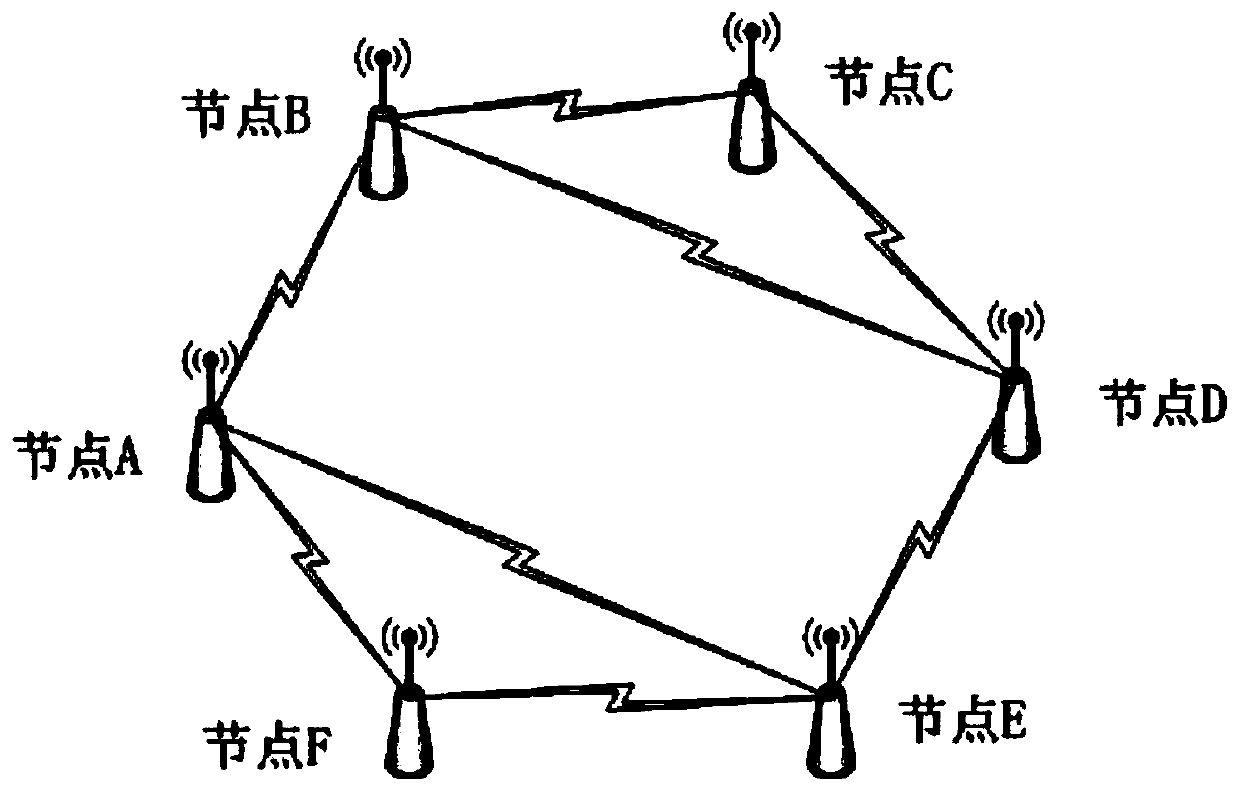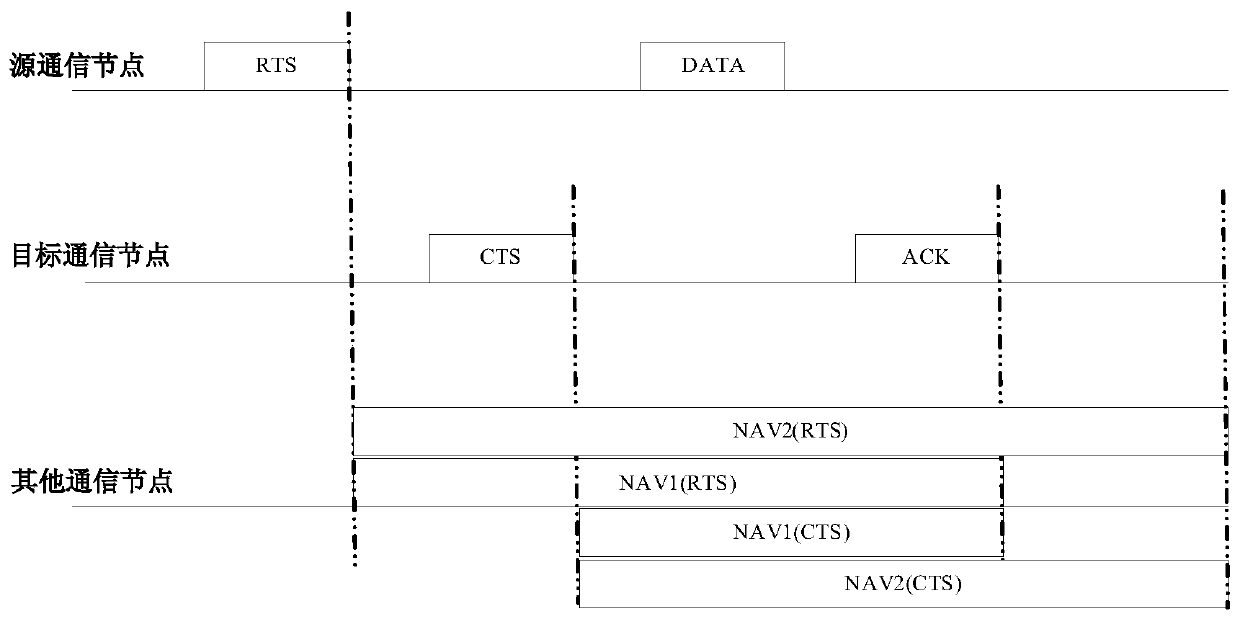A method for allocating wireless channel resources
A resource allocation and wireless channel technology, applied in the directions of transmission path sub-channel allocation, wireless communication, signaling allocation, etc., can solve the problems of increasing negotiation channel conflict, aggravating negotiation channel load, increasing communication delay, etc., to reduce control The effect of information overhead, reduction of negotiation times, and reduction of communication delay
- Summary
- Abstract
- Description
- Claims
- Application Information
AI Technical Summary
Problems solved by technology
Method used
Image
Examples
Embodiment 1
[0059] Assuming that node A has 5 symbols of data to be sent to node B at a certain moment, the wireless channel resource allocation method includes the following steps:
[0060] S1: The maximum number of symbols is determined to be 100 by using a static determination method;
[0061] S2: Before sending data, node A first queries NAV2 information and finds that there are 3 data channels fb, fc, and fd that are free, then randomly selects channel fd as the data channel from these three data channels, and sends it on the negotiated channel obtained through competition The RTS frame is sent to node B, and the RTS frame carries the number of symbols of node A's data to be sent 7, the maximum number of symbols that node A can occupy channel resources of 100, and the data channel fd that node A requires to occupy; the number of symbols of node A's data to be sent 7 includes the transceiving conversion of 1 symbol, the ACK frame of 1 symbol and the data to be sent of 5 symbols;
[0...
Embodiment 2
[0067] Assuming that node A has 5 symbols of data to be sent to node B at a certain moment, the wireless channel resource allocation method includes the following steps:
[0068] S1: Use a dynamic determination method to determine the maximum number of symbols, set Prate=100, Lavg=10 symbols, t=36×10 -6 Second, Lreq=15 symbols are substituted in formula (1), calculate and obtain maximum symbol number Smax to be 40 symbols;
[0069] S2: Before sending data, node A first queries NAV2 information and finds that there are 3 data channels fb, fc, and fd that are free, then randomly selects channel fd as the data channel from these three data channels, and sends it on the negotiated channel obtained through competition The RTS frame is sent to node B, and the RTS frame carries the number of symbols of the data to be sent by node A 7, the maximum number of symbols of the channel resources that node A can occupy is 40, and the data channel fd required by node A; the number of symbols ...
PUM
 Login to View More
Login to View More Abstract
Description
Claims
Application Information
 Login to View More
Login to View More - R&D
- Intellectual Property
- Life Sciences
- Materials
- Tech Scout
- Unparalleled Data Quality
- Higher Quality Content
- 60% Fewer Hallucinations
Browse by: Latest US Patents, China's latest patents, Technical Efficacy Thesaurus, Application Domain, Technology Topic, Popular Technical Reports.
© 2025 PatSnap. All rights reserved.Legal|Privacy policy|Modern Slavery Act Transparency Statement|Sitemap|About US| Contact US: help@patsnap.com



